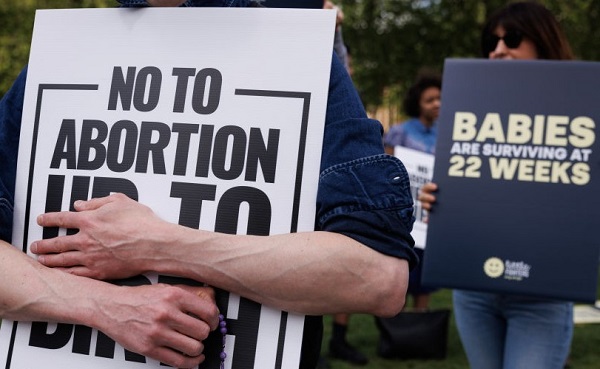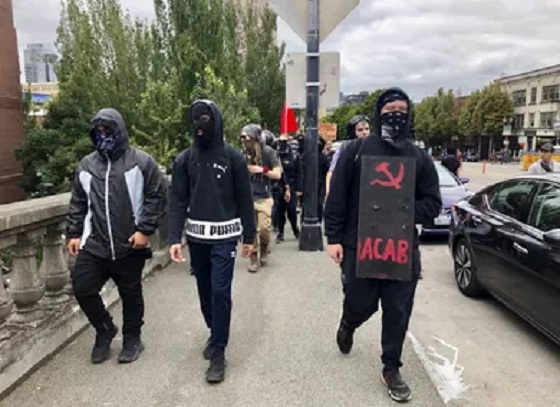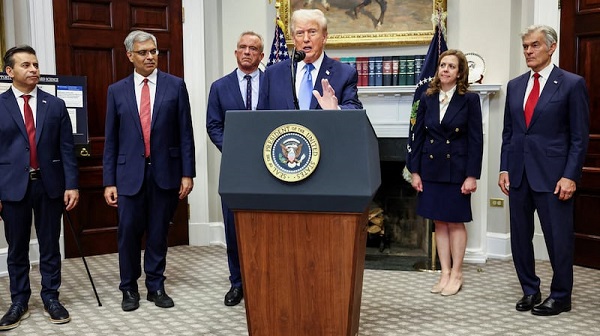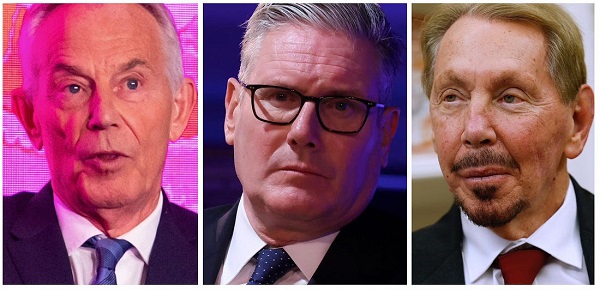International
Trump to Zelensky: Cease-fire main goal in Putin talks
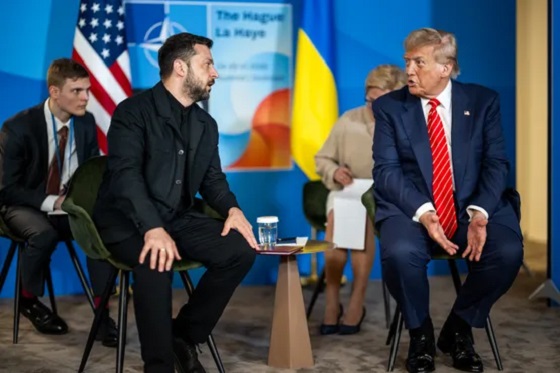
 MxM News
MxM News
Quick Hit:
President Donald Trump told Ukrainian President Volodymyr Zelensky his top goal in Friday’s Alaska summit with Vladimir Putin is securing a cease-fire, calling the leaders’ call a “10” and signaling a follow-up meeting with Zelensky if talks go well.
Key Details:
- Trump told Zelensky the primary goal of the Alaska summit with Putin is to push for a cease-fire.
- A second meeting including Zelensky could follow immediately if Friday’s talks go well.
- European leaders and Zelensky insisted no territorial concessions can be recognized without Ukraine’s consent.
Diving Deeper:
In a call with Ukrainian President Volodymyr Zelensky and European leaders Wednesday, President Donald Trump pledged that his main goal in Friday’s one-on-one meeting with Russian President Vladimir Putin in Anchorage, Alaska, would be to push for a halt in the fighting. Zelensky, speaking to reporters in Berlin, said, “All the partners demonstrated one voice, one desire, and one principle — there should be a cease-fire, there should be security guarantees. President Trump said he supports this and spoke about America’s readiness to take part.”
The White House confirmed that this will be the first in-person meeting between a U.S. president and Putin since 2021. Secretary of State Marco Rubio described the gathering as a “listening exercise” aimed at gauging whether Putin is serious about ending the conflict. Trump himself told reporters at the Kennedy Center that the call with Zelensky went “very well” and rated it “a 10.” He added that if Friday’s discussion went smoothly, he would move “almost immediately” to arrange a follow-up meeting between himself, Putin, and Zelensky.
While Trump appeared eager to move toward a broader peace negotiation, Zelensky underscored that Ukraine’s participation in any settlement was non-negotiable. He pointed to his constitutional obligation to put any potential land deal to a referendum — a process Trump had earlier said “bothered” him. U.S. law also bars Washington from recognizing Ukrainian territory as Russian without international consensus, further complicating the Kremlin’s push to secure recognition of Donetsk and Luhansk before peace terms are reached.
European leaders reportedly used the call to make clear to Trump why recognizing the two eastern Ukrainian regions as Russian territory prior to a peace agreement would be impossible. Zelensky also urged both the U.S. and Europe to levy additional sanctions on Russia, warning that Putin “for sure doesn’t want peace. He wants to occupy our territories.”
Putin, who proposed the Alaska meeting, has long refused to meet directly with Zelensky but has expressed interest in face-to-face talks with Trump. While immediate breakthroughs are unlikely, the summit is expected to set the stage for a potential three-way negotiation — one Trump insists will be essential to ending the war.
Business
Elon Musk announces ‘Grokipedia’ project after Tucker Carlson highlights Wikipedia bias
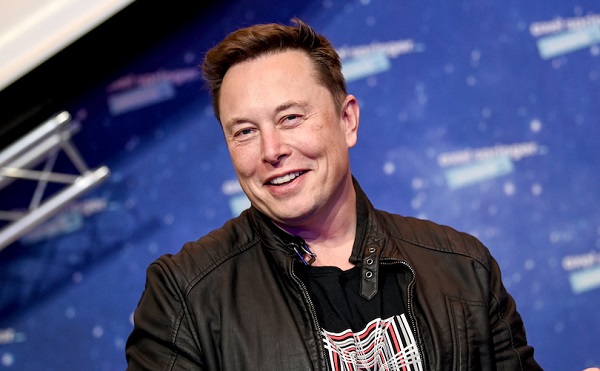
From LifeSiteNews
By Joseph Quinn
Wikipedia co-founder Larry Sanger explained how Wikipedia systematically blacklists and “deprecates” conservative sources. Wikipedia remains one of the most heavily used information sources online and is integrated with Google search results.
Elon Musk has announced plans to build “Grokipedia,” a new open-source online encyclopedia under his artificial intelligence company xAI.
“Will be a massive improvement over Wikipedia,” Musk wrote on X. “Frankly, it is a necessary step towards the xAI goal of understanding the Universe.”
We are building Grokipedia @xAI.
Will be a massive improvement over Wikipedia.
Frankly, it is a necessary step towards the xAI goal of understanding the Universe. https://t.co/xvSeWkpALy
— Elon Musk (@elonmusk) September 30, 2025
The announcement came days after Tucker Carlson’s interview with Larry Sanger, a co-founder of Wikipedia and a vocal critic of the organization since his departure in 2002.
Larry Sanger built Wikipedia as an unbiased repository of the world’s knowledge, and then stood helplessly by as activists and intel agencies turned it into the most comprehensive propaganda op in human history. There’s nothing more corrupt.
(0:00) The Origins of Wikipedia… pic.twitter.com/J59oEejCG2
— Tucker Carlson (@TuckerCarlson) September 29, 2025
Sanger explained how Wikipedia systematically blacklists and “deprecates” conservative sources. Seeing LifeSiteNews on the list, Carlson said that the platform has become “a weapon of ideological, theological war.”
Musk echoed Sanger’s criticisms, affirming Judicial Watch president Tom Fitton’s claim that “Wikipedia is a smear machine for the Left.”
💯
— Elon Musk (@elonmusk) September 30, 2025
Musk later amplified memes promoting Grokipedia, calling it “an open source knowledge repository that is vastly better than Wikipedia.”
Join @xAI and help build Grokipedia, an open source knowledge repository that is vastly better than Wikipedia!
This will be available to the public with no limits on use. https://t.co/3CnfrvNIpI
— Elon Musk (@elonmusk) September 30, 2025
He also affirmed Sanger’s “Nine Theses,” which call for dismantling Wikipedia’s centralized editorial control.
Some good suggestions from the co-founder of Wikipedia https://t.co/bgwBmi6uXN
— Elon Musk (@elonmusk) September 30, 2025
Musk has not released technical details of the Grokipedia project but said that Grok AI will be independent of Wikipedia “by the end of the year.”
Images of a potential logo were also shared on his X account.
Wikipedia should have just taken that $1 billion offer from Elon Musk, it’s too late, the rival is coming: Grokipedia! pic.twitter.com/cLBKfPRgyO
— SMX 🇺🇸 (@iam_smx) September 30, 2025
Wikipedia remains one of the most heavily used information sources online and is integrated with Google search results. Critics argue that its governance model allows biased editors – described as “ideologically-driven thought police” – to shape content and suppress dissenting viewpoints, particularly on political, cultural, and religious topics.
A similar initiative called “Infogalactic” was launched in 2016. A “fork” of Wikipedia, it was designed to decentralize control and allow multiple perspectives. While Infogalactic never reached Wikipedia’s scale, it established a model for alternative knowledge repositories.
Attracting a critical mass of editors and establishing credibility remain significant challenges facing such alternatives. Musk’s involvement signals a higher-profile challenge to Wikipedia’s dominance, combining xAI’s technological resources with his public platform on X.
Musk has not provided a clear timeline, but the announcement positions xAI to mount a direct challenge to Wikipedia’s dominance of the information ecosystem.
International
Netanyahu hails TikTok takeover as Israel’s new ‘weapon’ in information war

From LifeSiteNews
After the ADL’s alarm regarding overwhelming pro-Palestinian posts on TikTok, “Allies of Israel” are now slated to take control of the platform and its algorithm
Benjamin Netanyahu described the expected purchase of the social media platform TikTok by allies of Israel as the acquisition of a “weapon” that is “most important” to “fight the fight.” And he believes this development “could be extremely consequential.”
The Israeli prime minister was speaking to a group of “pro-Israel influencers” in a meeting after his address at the United Nations General Assembly last Friday were an overwhelming majority of national delegations walked out in apparent protest to what is widely considered a genocidal war he and his nation are inflicting against the Palestinian people in Gaza.
A media release from Netanyahu’s office reported the prime minister spoke with this group of “pro-Israel American influencers” about “challenges in the new era, as well as the public diplomacy efforts and the influence of the social networks on the discourse for and against Israel.”
Asked about how to combat dangers to the Zionist cause due to a potential loss of Evangelical support in the United States, which is also impacted by popular Israel-critics Candace Owens and Tucker Carlson, Netanyahu directed his listeners to considering social media as “tools for battle” and then emphasized the expected purchase of TikTok to be “most important” in serving Israel’s interests in this regard.
“What we have to do is we have to secure that part of the base of our support in the United States, that is being challenged systematically… How do we fight back? Our influencers, I think you should also talk to them if you have a chance,” the prime minister said. “And secondly, we’re going to have to use the tools of battle. The weapons change over time… we have to fight with the weapons that apply to the battlefields within which we’re engaged. And the most important ones are on social media.”
Netanyahu then celebrated “the most important purchase that is going on right now” that he identified as being TikTok. “And I hope it goes through because it can be consequential.”
‘TikTok problem’ about free speech regarding Israel
In November 2023, a recording was leaked of the Anti-Defamation League’s Jonathan Greenblatt sounding the alarm that Israel had “a major, major, major generational problem” with all of the polling indicating “the issue in the United States’ support for Israel is not left and right. It is young and old.”
“We really have a TikTok problem, a Gen Z problem, that our community needs to … put our energy toward … like fast,” the ADL national director exclaimed at the time.
Attitudes among Generation Z Americans, those who are 30 years old and younger, toward Israel have been low and dropping steadily in recent years. A 2022 Pew survey found that 55 percent of Americans had a favorable view of Israel but that only 41 percent of those ages 18-29 had a favorable view of Israel, compared with 69 percent of those age 65 or older.
By 2024, Pew found that those in Gen Z who sympathize with Israel had fallen to just 14 percent, with 33 percent expressing sympathies for the Palestinians.
A 2023 article published by The Hill similarly reported that Gen Z “is more skeptical of Israel than older Americans. On TikTok, where half the users are under 30, #freepalestine has 31 billion posts compared with 590 million for #standwithisrael – more than 50 times as many.”
Israel Lobby orgs back TikTok bill to prevent ‘anti-Israel sentiment’ from running ‘rampant’ on platform
Seeking a remedy for this supposed problem the ADL and other groups from the Israel Lobby, along with many other entities, lobbied for the “Protecting Americans from Foreign Adversary Controlled Applications Act” (PAFACA). This bill’s stated aim was to forbid applications “such as TikTok” from operating in the United States due to its ties with the Chinese government and resulting concerns over this “foreign adversary” misusing data collected from the app’s American users.
However, as Israel’s war against the people of Gaza marched on, the Jewish Federations of North America lobbied for passage of the bill, accusing TikTok of allowing “anti-Israel sentiment to run rampant” while the Zionist women’s advocacy group Hadassah also joined the lobbying due to a concern over antisemitism on the platform.
Top politicians took up this cause as well. Texas GOP Senator Ted Cruz complained that TikTok promoted “anti-Israel propaganda,” while former presidential candidate Nikki Haley alleged that “for every 30 minutes that someone watches TikTok every day they become 17 percent more antisemitic.”
Legislators heavily funded by AIPAC, bill passed for purposes of censorship
Furthermore, according to the Nebraska Examiner, each of the bill’s 55 co-sponsors in the House of Representatives had received donations from the American Israel Public Affairs Committee (AIPAC) within the previous two election cycles. The total amount awarded to these legislators for their respective 2024 campaigns alone was $3.35 million.
In April 2024, just five months after Greenblatt’s warning above, the U.S. Congress passed PAFACA with bipartisan support and Joe Biden signed it into law.
Marveling at how quickly the TikTok legislation was passed Senator Mitt Romney did not say this was caused by pressing concerns in Congress over Chinese data collection, but he rather admitted the next month it was due to the volume of pro-Palestinian postings happening on that platform as compared to those supporting Israel in its ongoing attacks upon Gaza.
Pro-Israel billionaire Larry Ellison to now control TikTok’s algorithm
Last Thursday, President Donald Trump signed an executive order approving a deal to place TikTok under the control of predominantly American companies. One of the entities that will have a significant stake in TikTok with the authority to control its algorithm is Oracle, which is owned by extremely pro-Israel billionaire Larry Ellison.
Not only is Ellison the second richest man in the world, but he is the single largest private donor to an Israeli army that stands accused of enormous numbers of war crimes in Gaza.
In a piece titled “Israel wins TikTok,” Kelley Vlahos summarizes, “Larry Ellison and a constellation of billionaires will finally get their way, buying the very app they wanted to kill a year ago for being too ‘pro-Palestinian.’”
Another investor included is well-known media mogul Rupert Murdoch, who owns hundreds of local, national, and international publishing outlets around the world, including The Wall Street Journal, Fox News and the New York Post.
‘Psychological warfare’ primarily concerned with suppressing ‘unauthorized communication among subject peoples’
In response to these developments, popular commentator Candace Owens tweeted, “I love that Bibi Netanyahu was asked how to combat Candace Owens and Tucker Carlson and his answer was effectively ‘we have to buy TikTok.’”
Owens observed, “Like it has never once occurred to these people to simply stop murdering people and maybe start telling the truth. Not even an option.”
An X/Twitter user named Heinz replied, “Notice how the solution is always more control of media platforms, never reform of their own behavior.”
Netanyahu turns his sights beyond TikTok to ‘X’ as well
With an apparent intention of “shielding the people” from information the Israeli government is loath for them to see, Netanyahu seems to expect his allies to end TikTok’s democratization of the news, putting an end to its allowing “anti-Israel sentiment to run rampant” on the platform.
Nor does this appear to be enough for him. Continuing in his discourse with “pro-Israel influencers,” the prime minister turned his sights further to focus on “X” / Twitter emphasizing the importance of engaging this social platform as well.
“And so, we have to talk to Elon, he’s not an enemy. He’s a friend,” Netanyahu said about the company’s owner, Elon Musk. “We should talk to him.”
“Now if we can get those two things (TikTok and X), we get a lot,” he concluded.
-
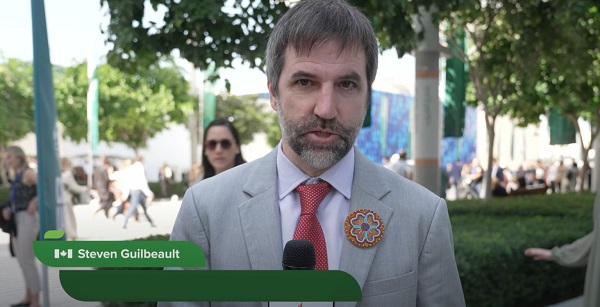
 Censorship Industrial Complex2 days ago
Censorship Industrial Complex2 days agoCanada To Revive Online Censorship Targeting “Harmful” Content, “Hate” Speech, and Deepfakes
-

 Alberta2 days ago
Alberta2 days agoAlberta refuses to take part in Canadian government’s gun buyback program
-
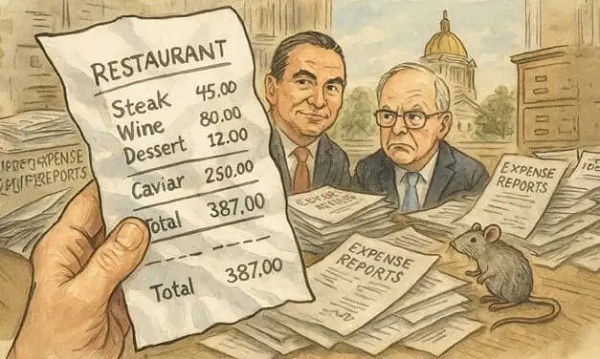
 Business1 day ago
Business1 day agoTaxpayers deserve proof of how politicians spend their money
-

 Business1 day ago
Business1 day agoOttawa’s civil service needs a Chrétien-style reset
-
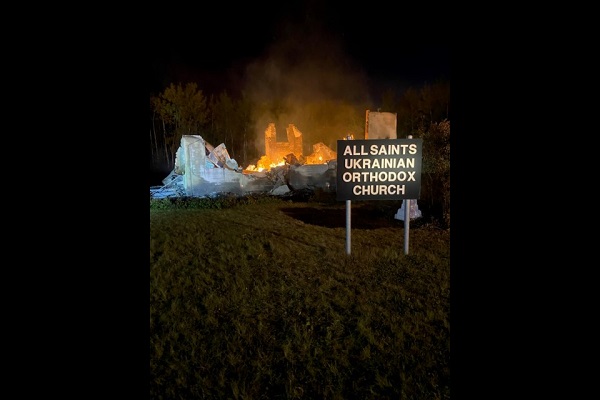
 Alberta2 days ago
Alberta2 days agoOrthodox church burns to the ground in another suspected arson in Alberta
-

 Fraser Institute1 day ago
Fraser Institute1 day agoAboriginal rights now more constitutionally powerful than any Charter right
-

 Alberta1 day ago
Alberta1 day ago$150 a week from the Province to help families with students 12 and under if teachers go on strike next week
-
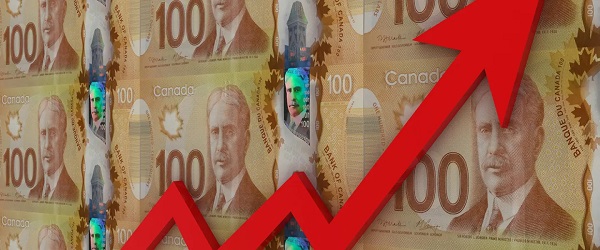
 Business1 day ago
Business1 day agoNew PBO report underscores need for serious fiscal reform in Ottawa

